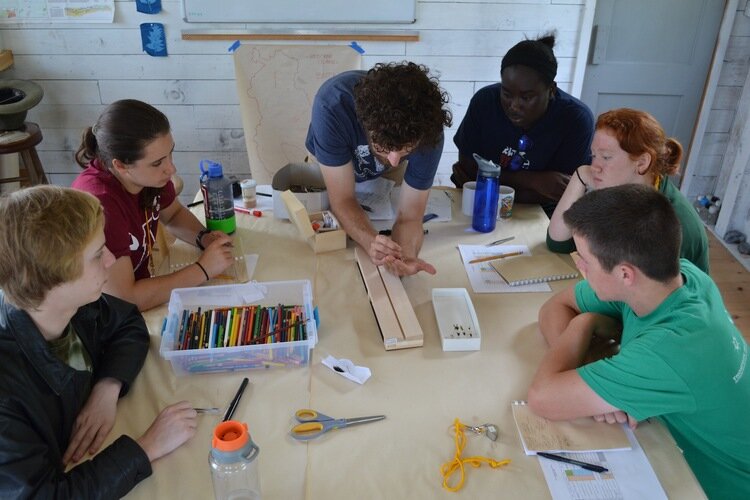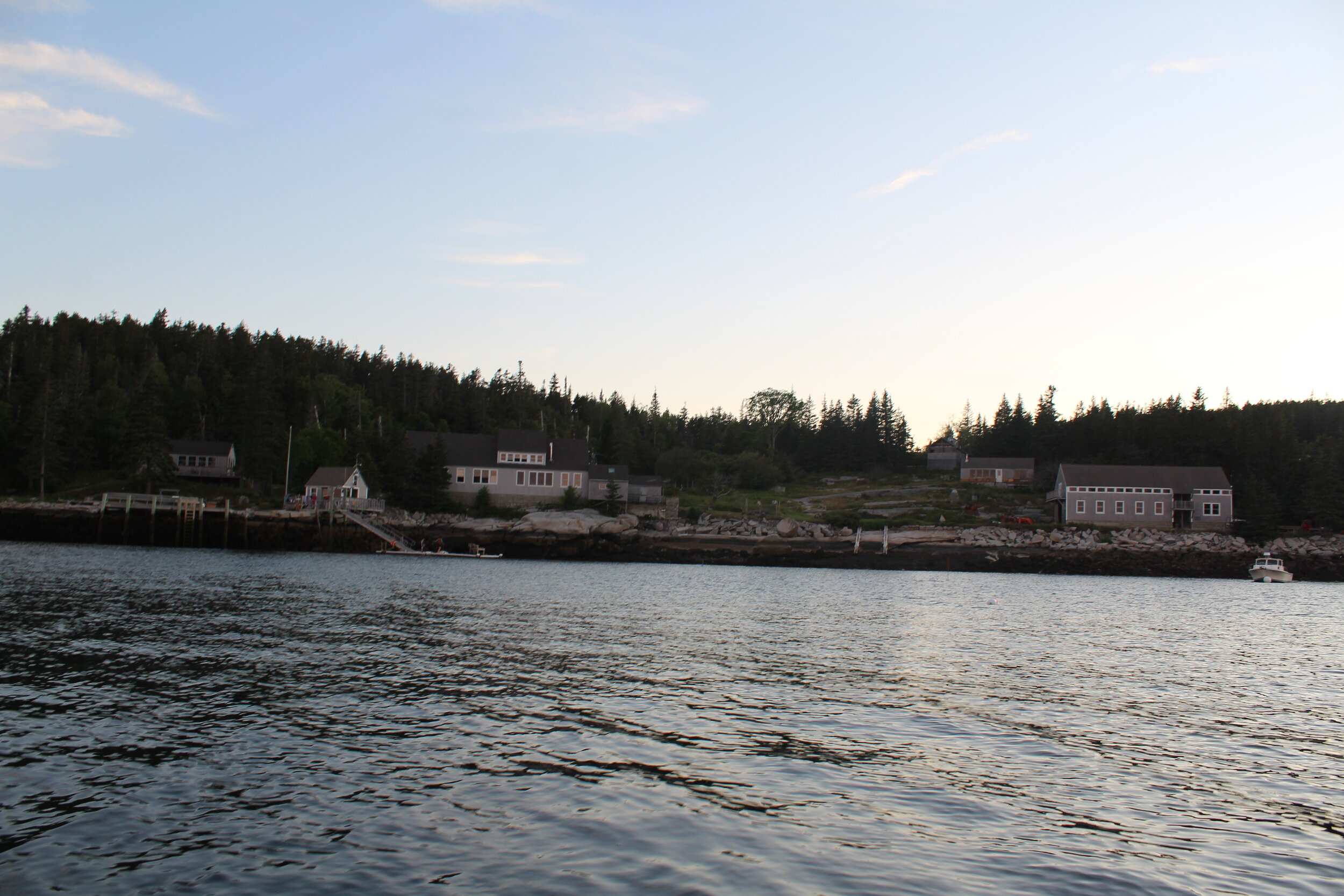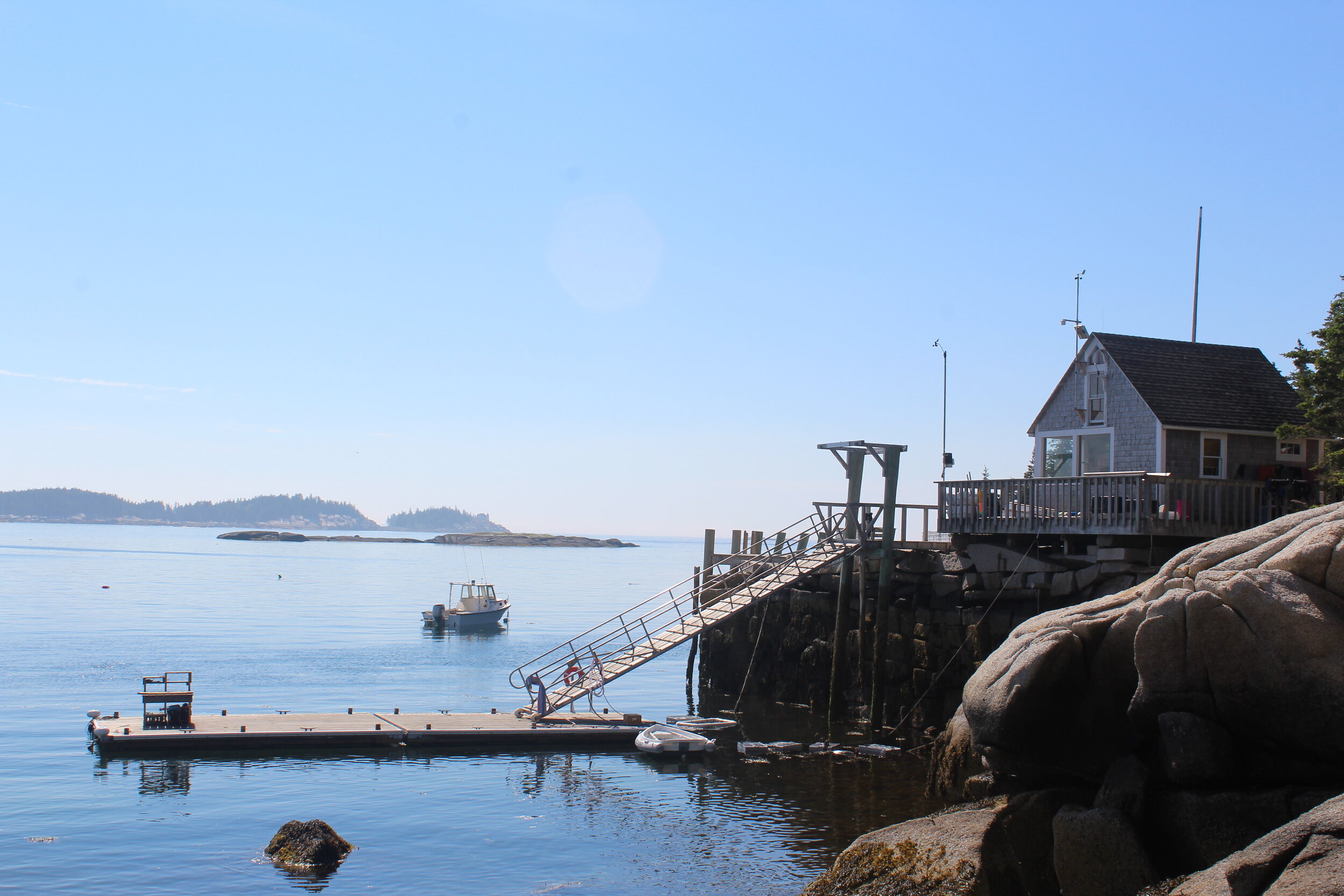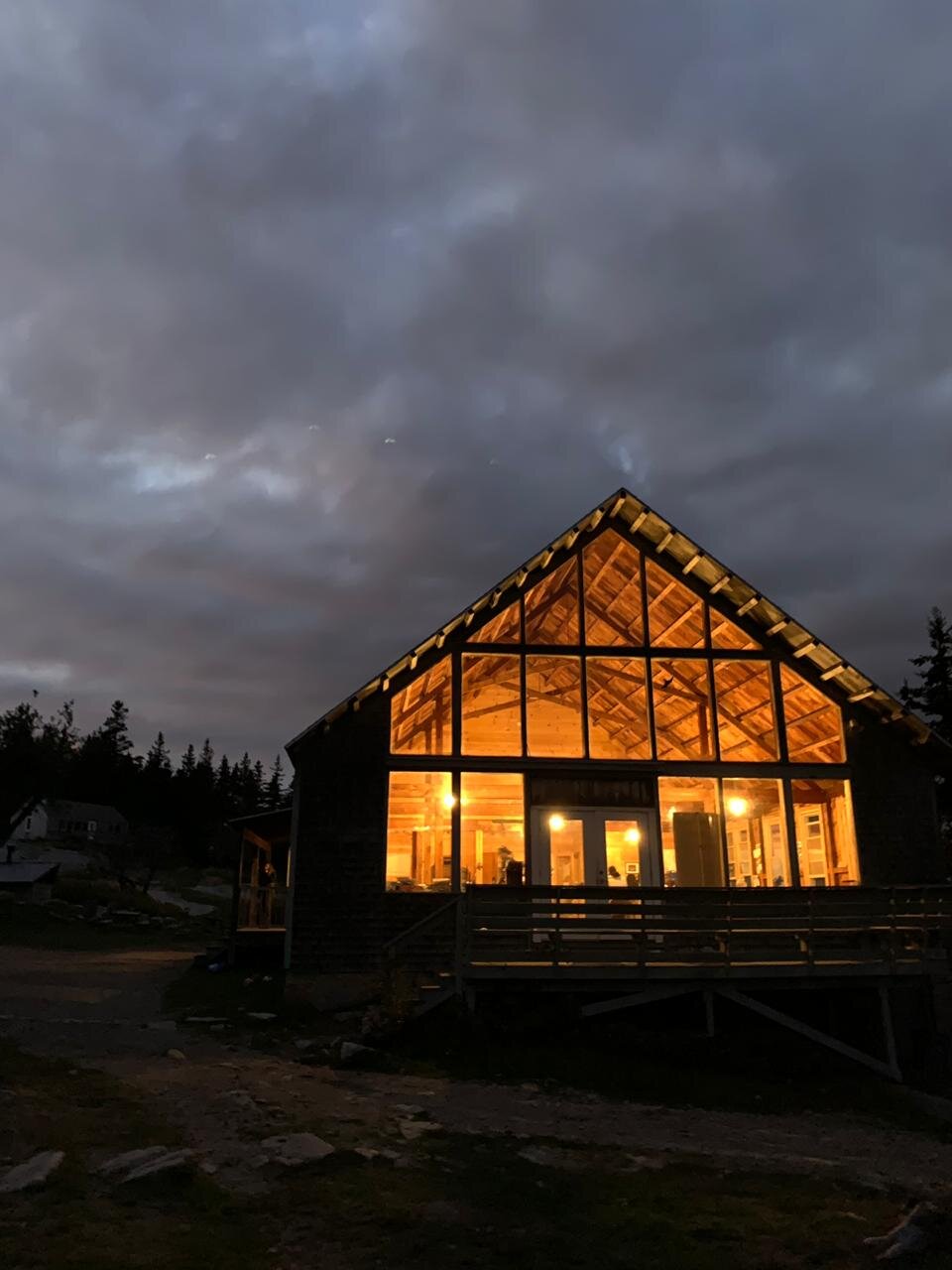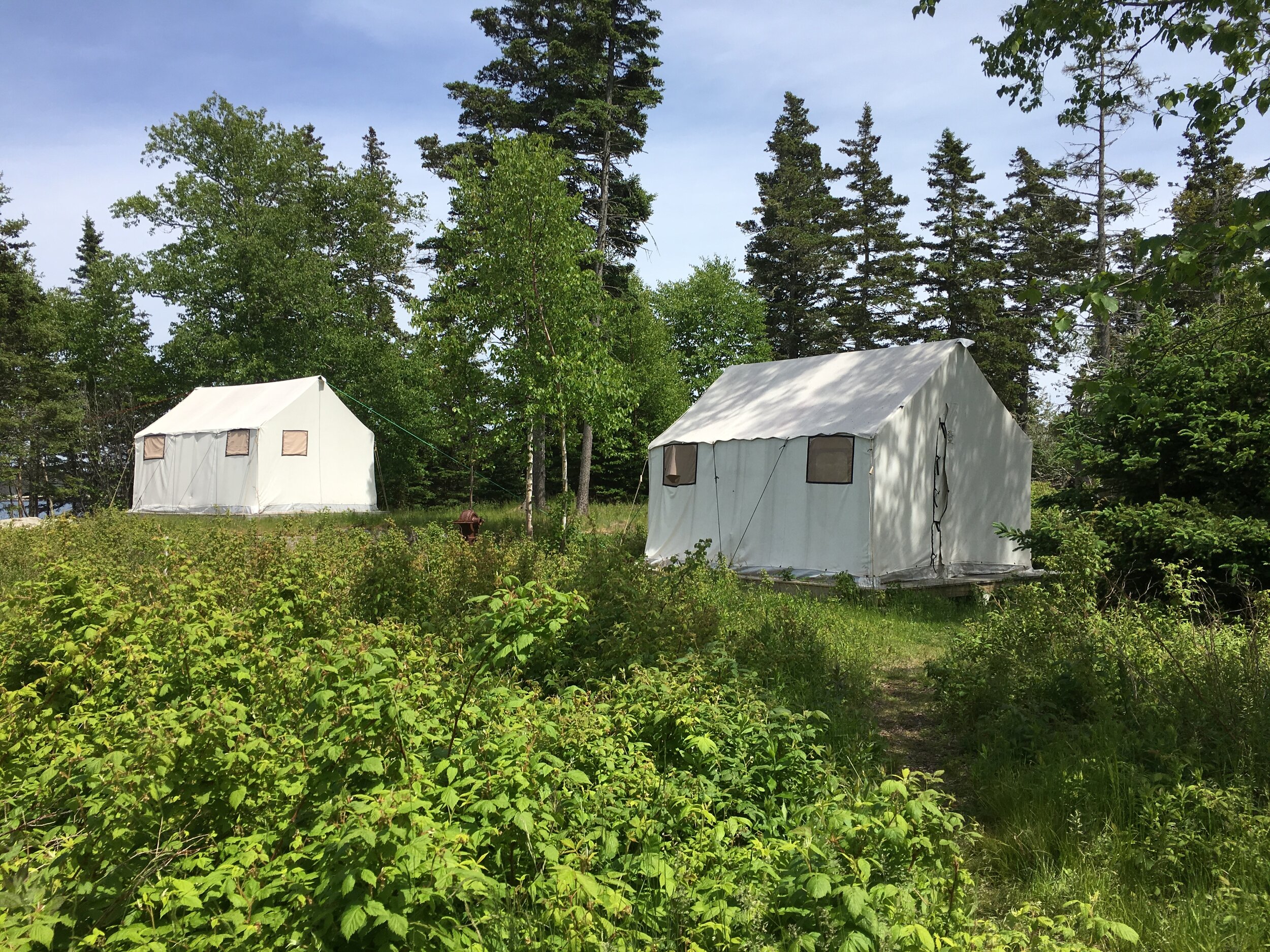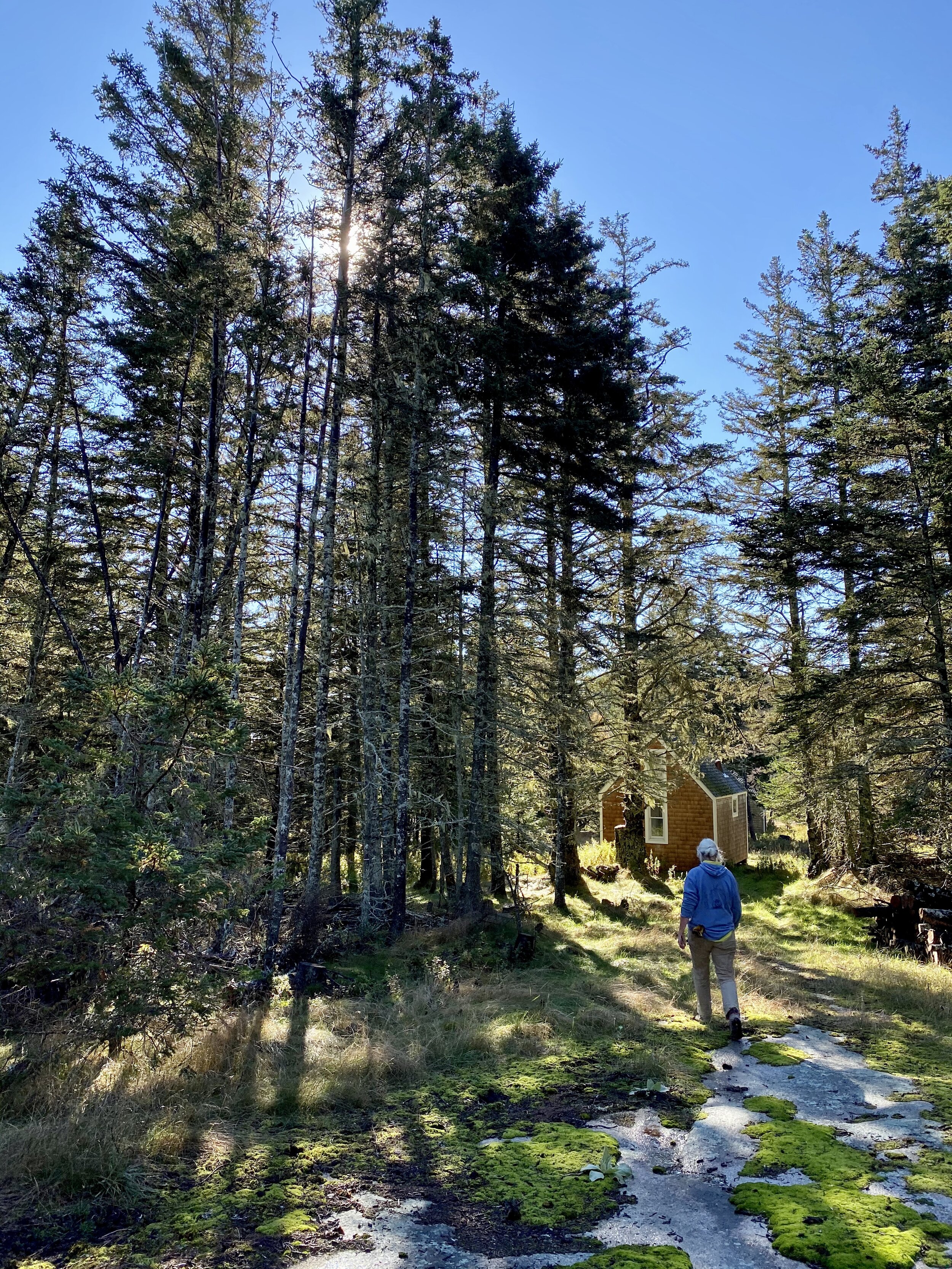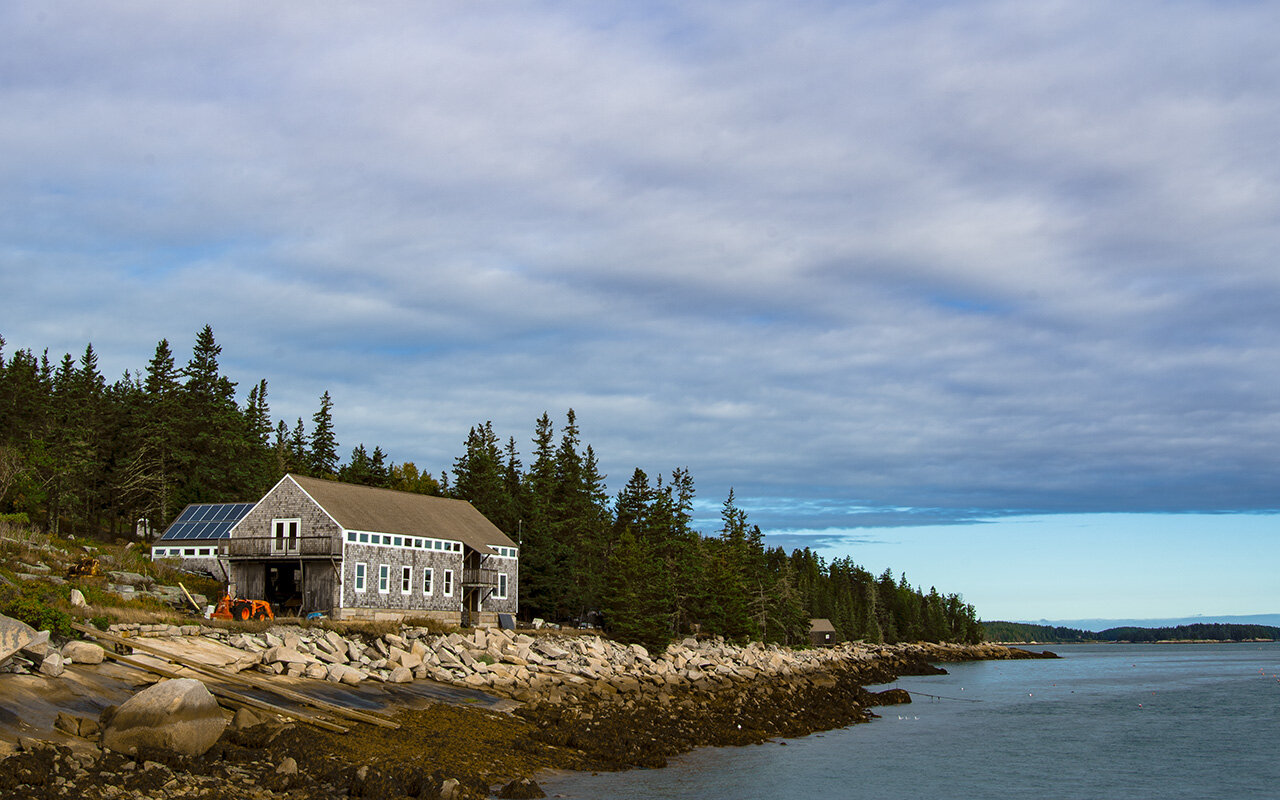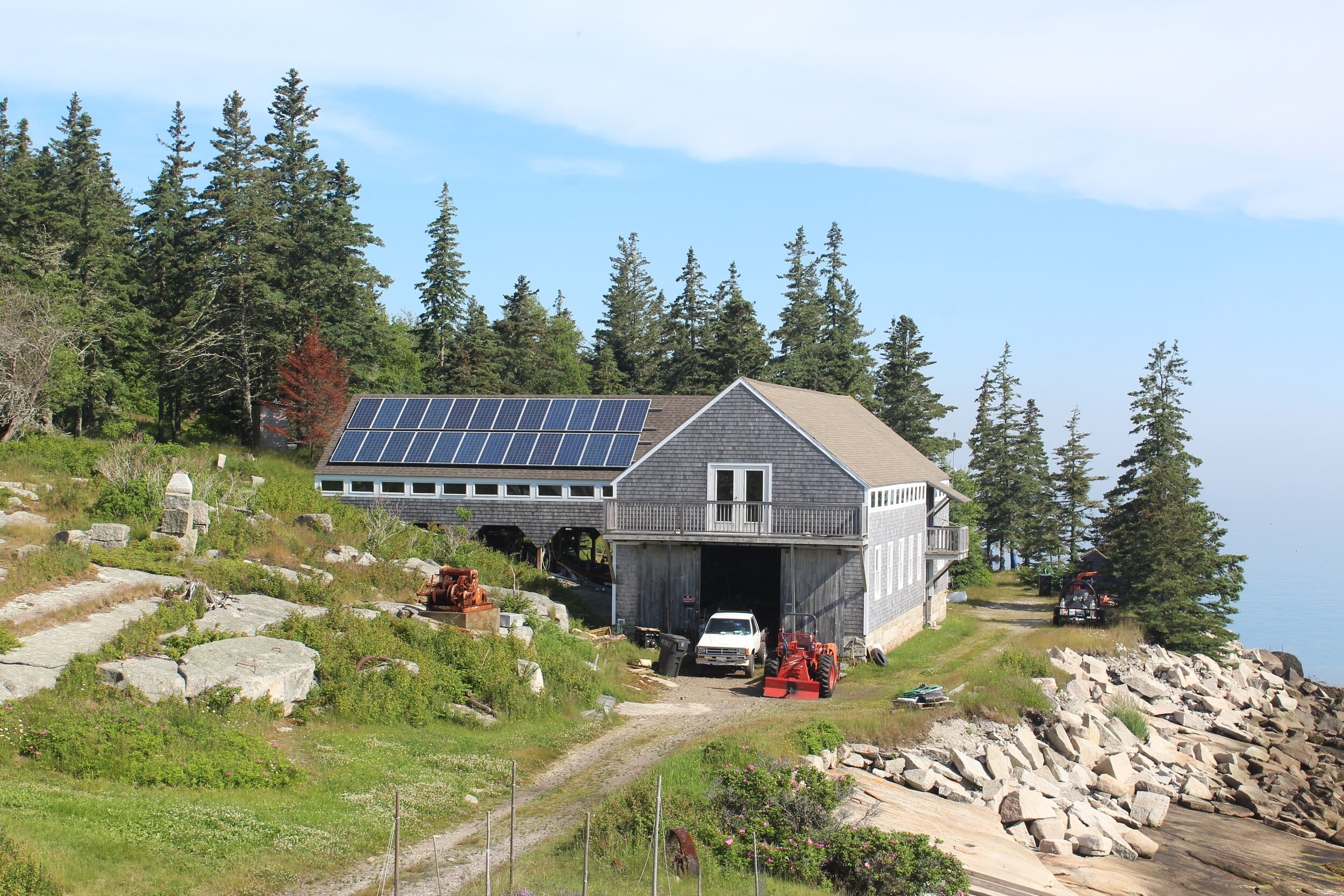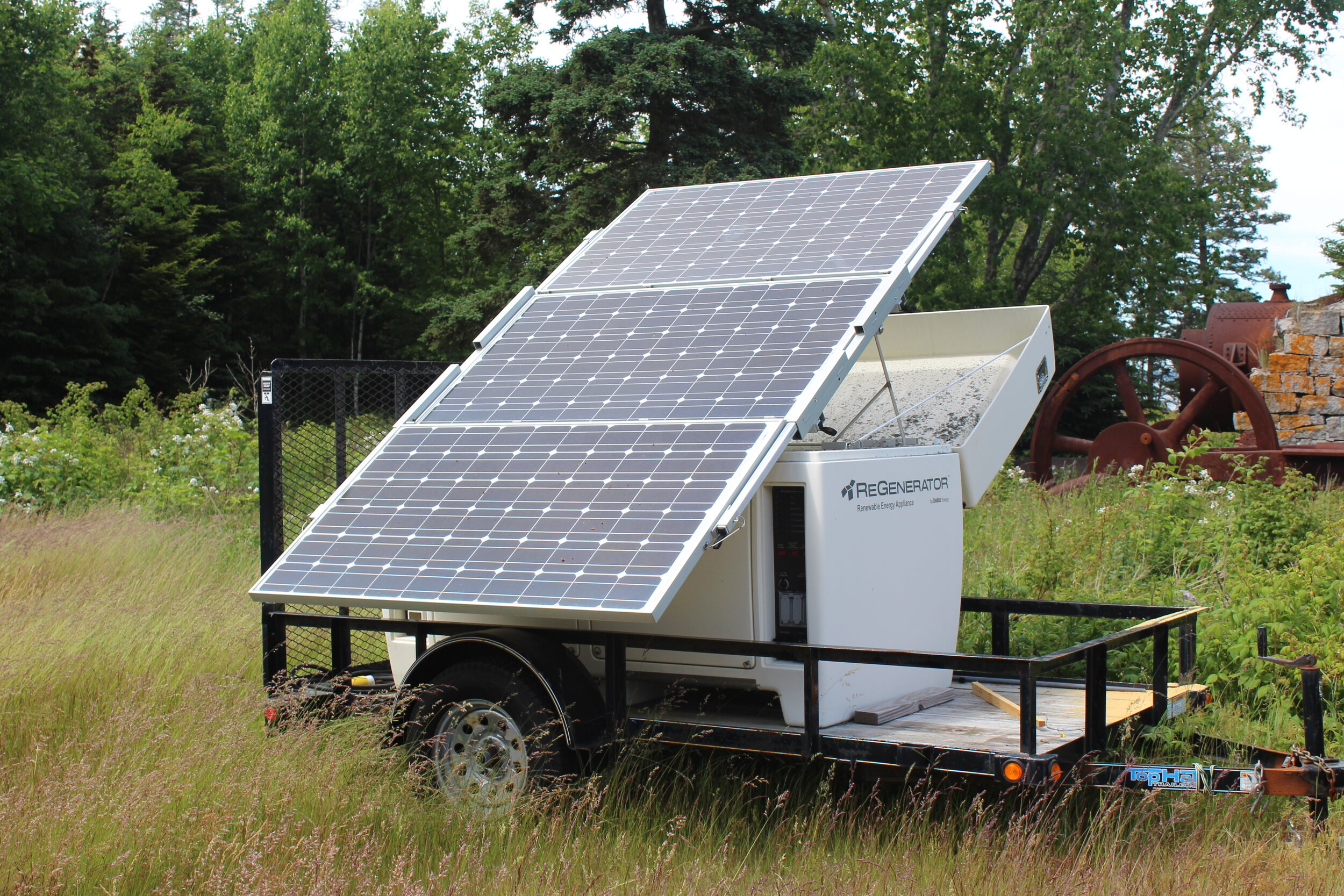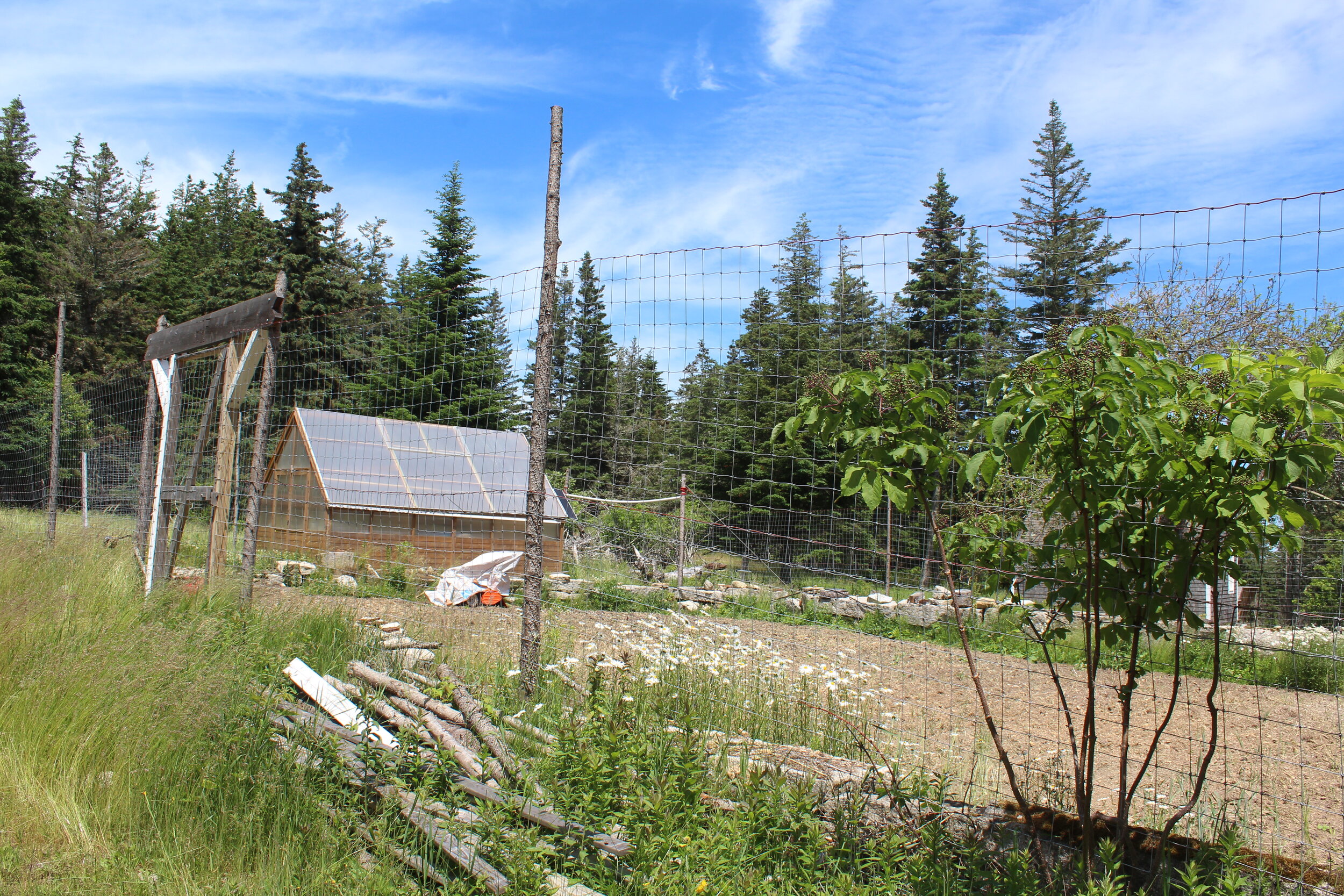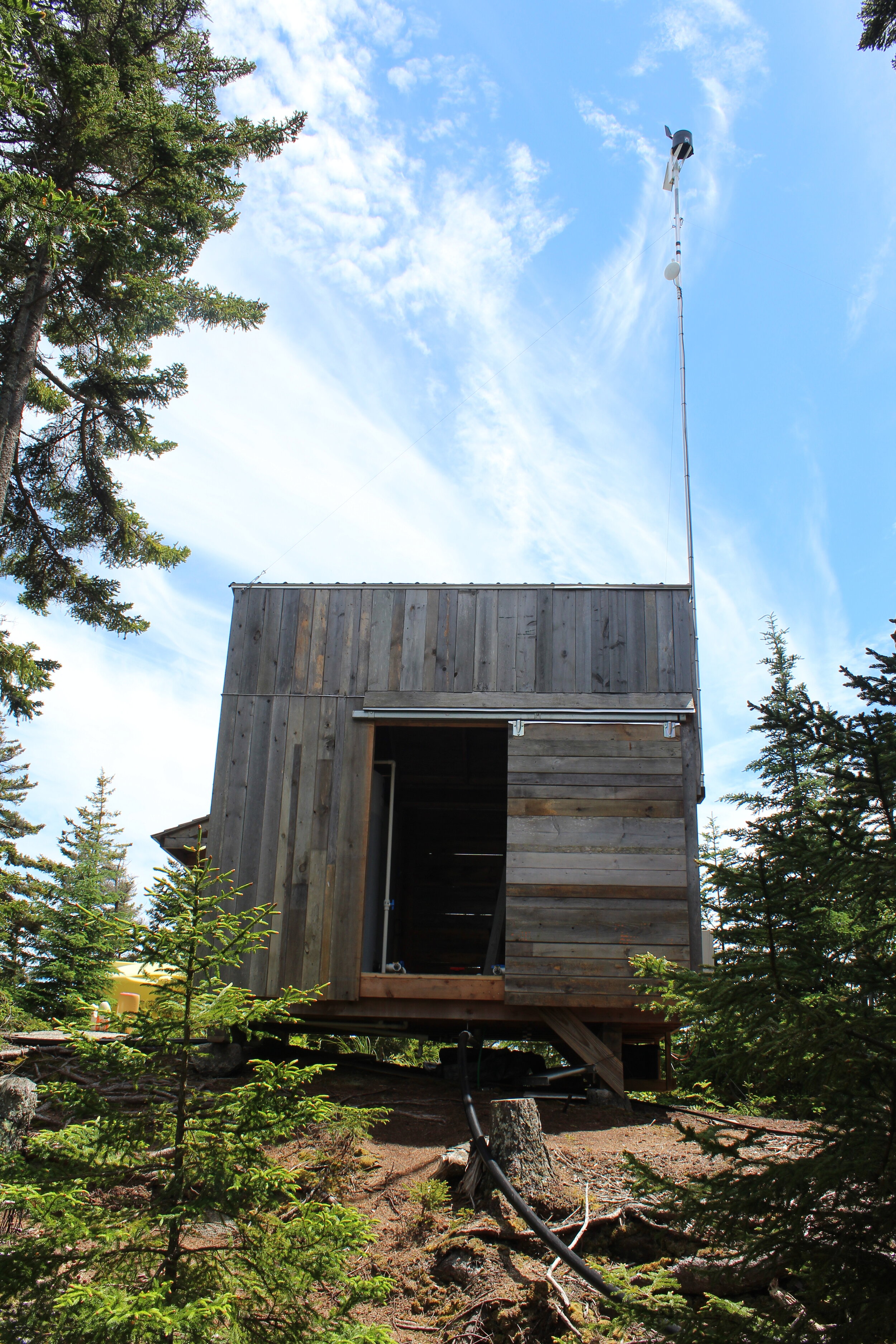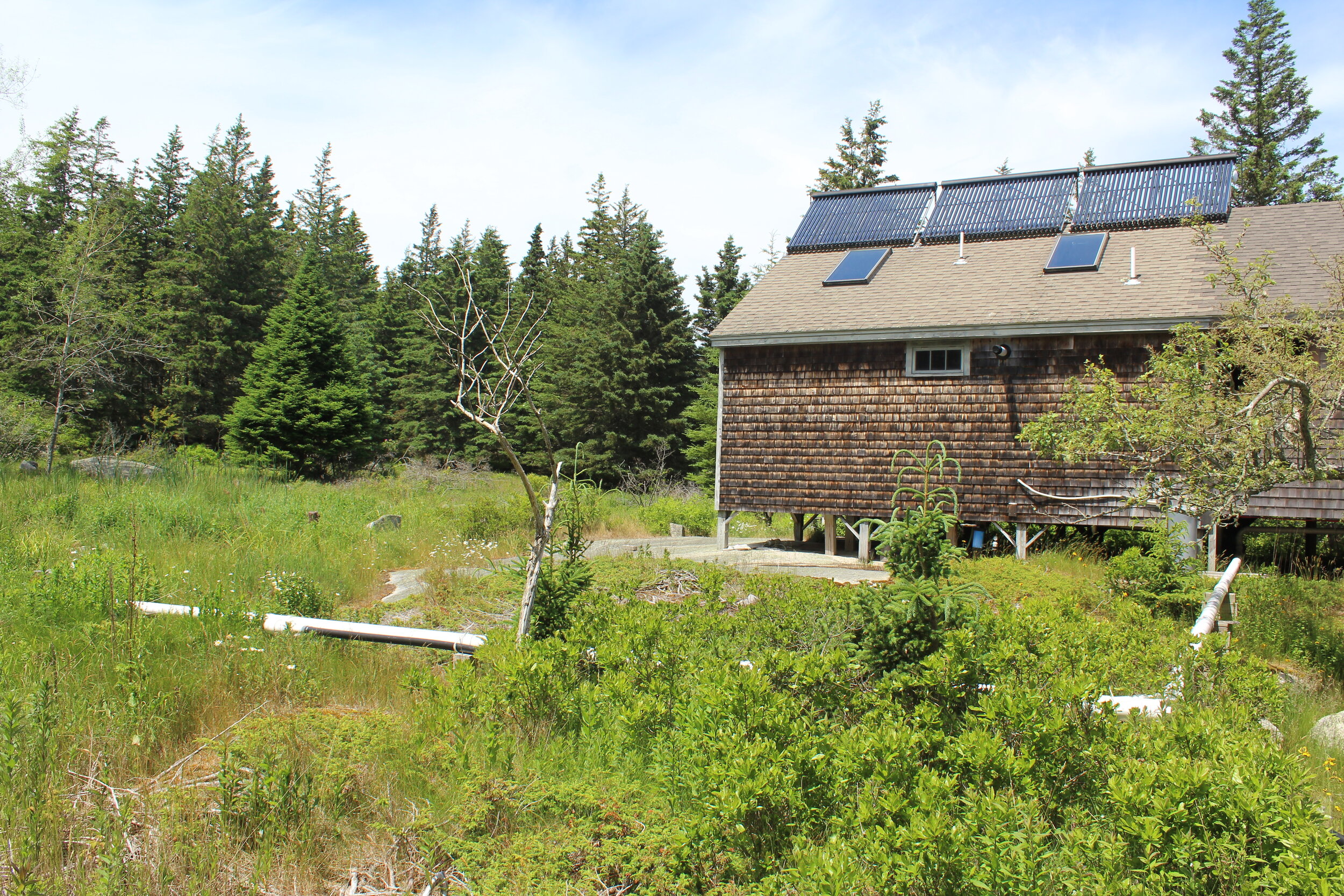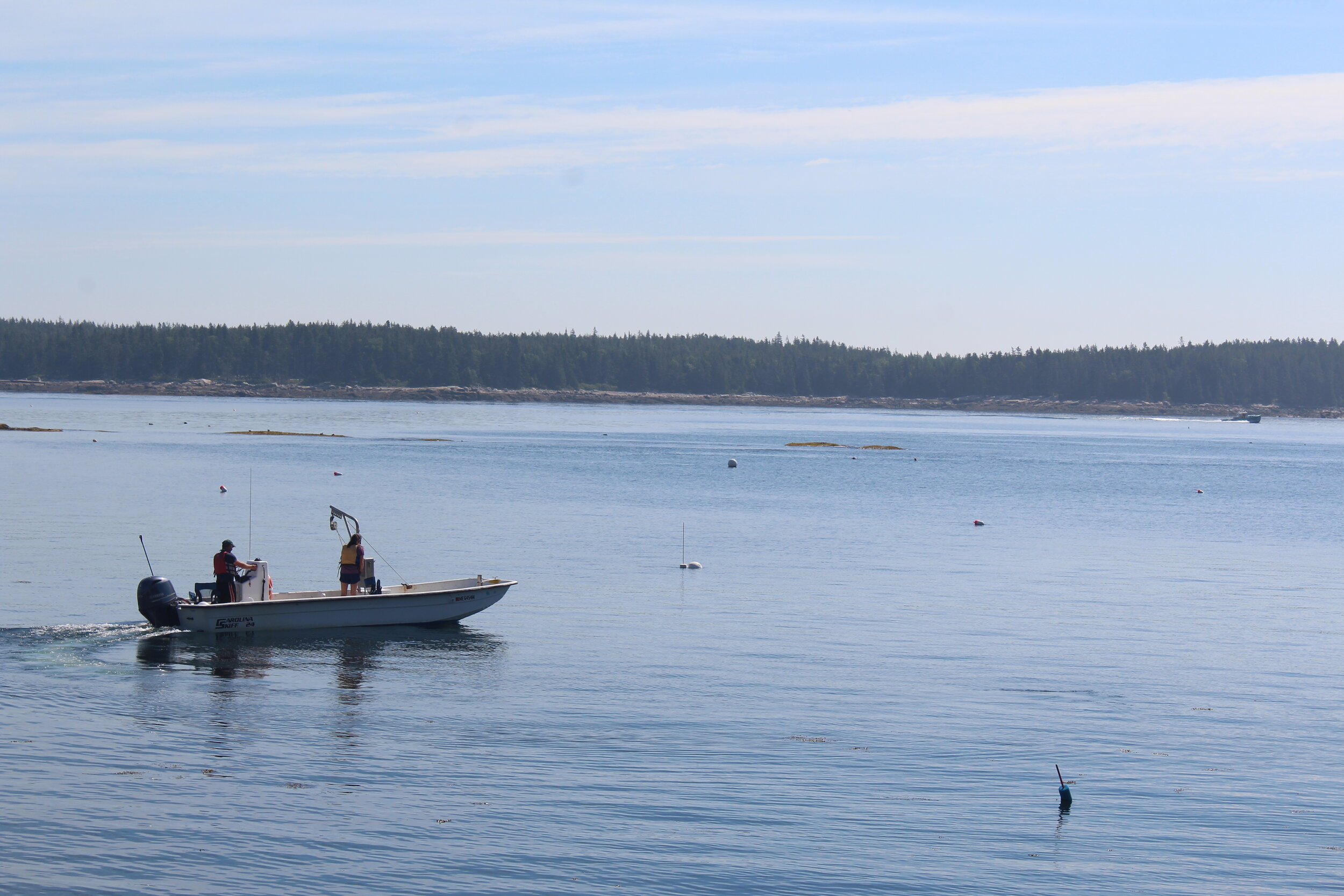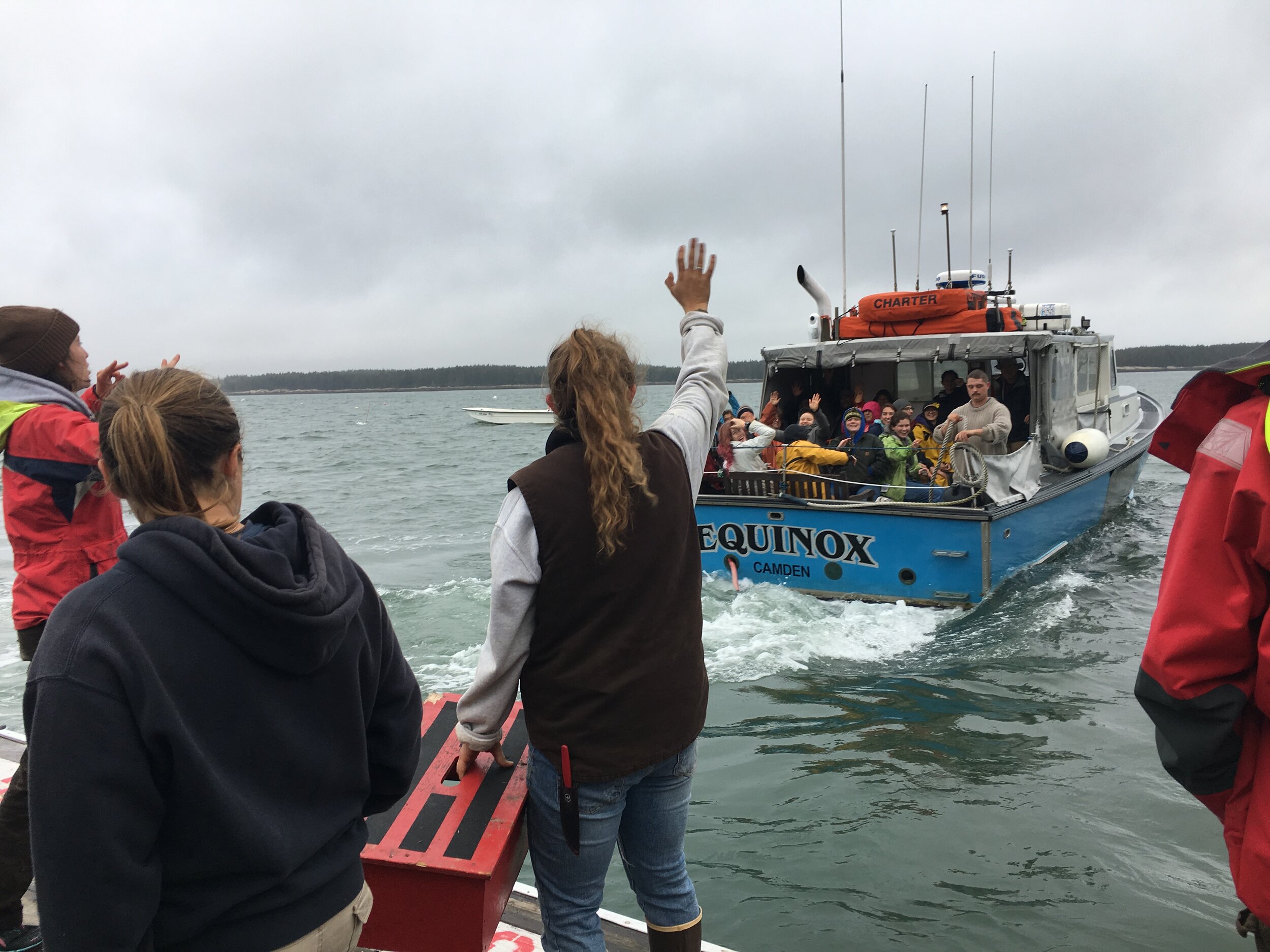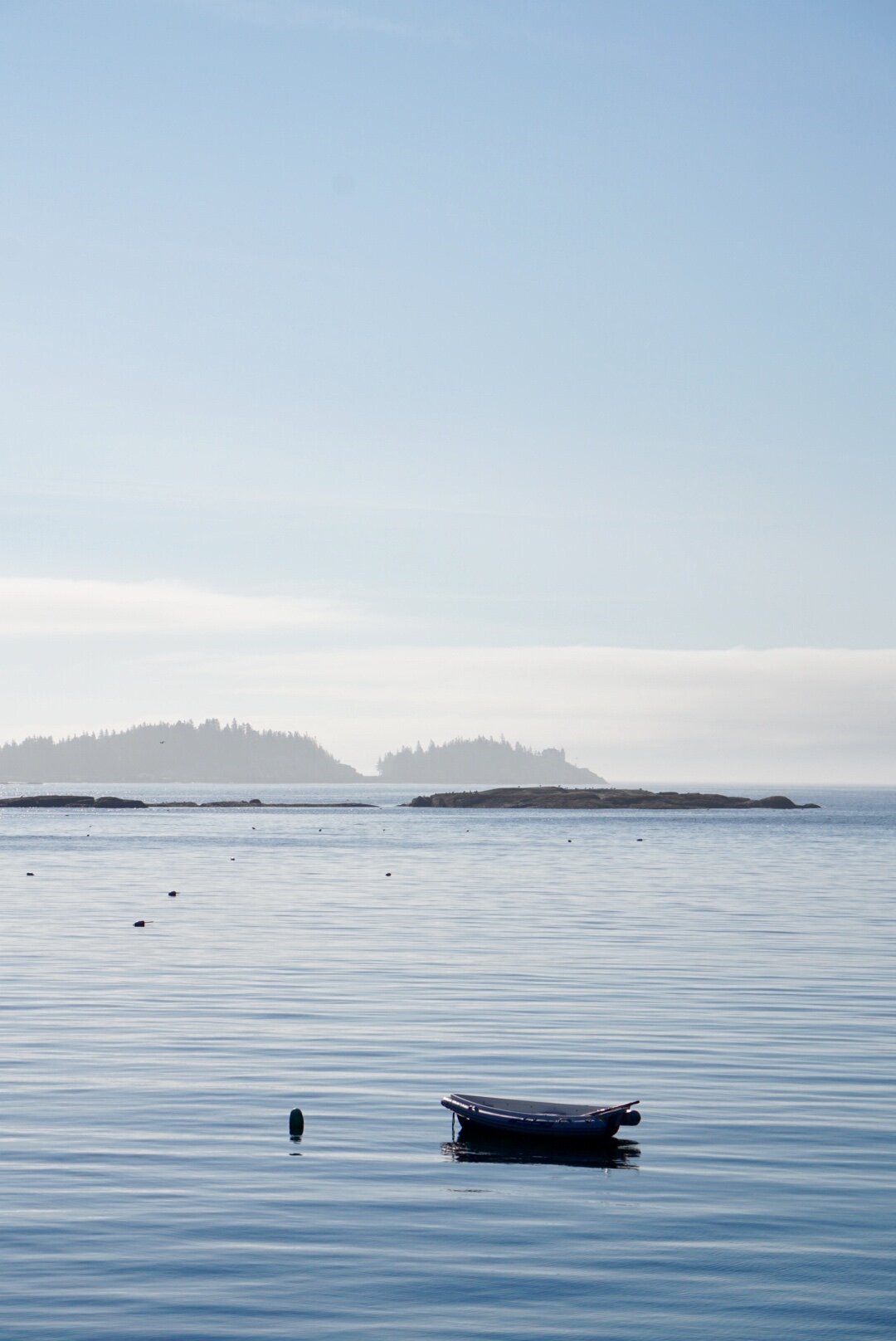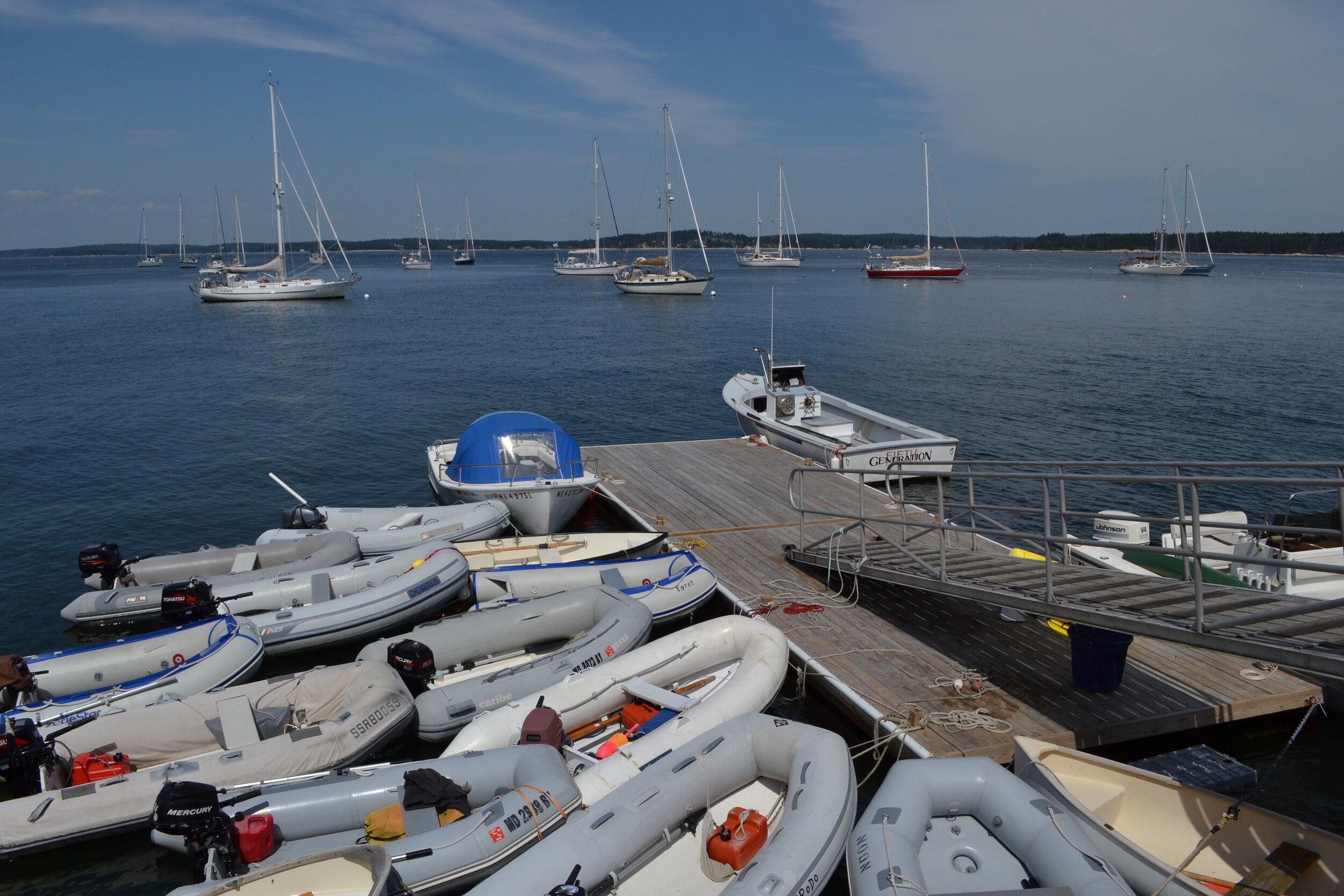Facilities on Hurricane Island
The design of our systems are based on these design goals and considerations:
Sustainability, reliability, scalability/modular design, redundancy, readability, carbon-neutrality, replicability, efficiency, simplicity, human-scale, and serviceability.
Main Campus
Galley and Mess Hall: (50-person capacity) Our mess hall is the hub of our campus and serves as our dining area. Our kitchen is equipped with a commercial six-burner range and griddle, two energy efficient refrigerators, a chest freezer, a three-bay stainless steel sink and prep table, and food storage. We source our food through local farms and fisherman, our own gardens, and Native Maine to ensure we can meet the dietary needs of all of our participants.
Lab: (10-12 person capacity) As you walk up the trail you will see our lab to your left. This is where lots of the science programming takes place. It is full of field research equipment including field guides, binoculars, water quality testing equipment, compound and dissecting microscopes, transect tapes, dissection equipment, and study skins and skeletons. The lab has its own photovoltaic power system, which consists of a 560-watt array, a small battery bank and inverter. The back of the lab is used for research purposes and their scallop studies.
Classroom/student space: (12-15 person capacity) This multi-purpose space houses our recreational library and is a student space during longer programs.
Restrooms: Hurricane Island’s main restroom facility has four Clivus Multrum, foam-flush composting toilets.
Infirmary/Island Safety: Our infirmary is equipped with wilderness medical kits, and two beds for program participants who become ill. Our staff are certified in Wilderness First Aid, which provides them with appropriate training in first aid and CPR. Our safety policies and procedures were developed for our programs with help from outside physicians and wilderness medicine consultants and with the remote nature of the island in mind. We have a relationship with Vinahaven EMS and the Vinalhaven Clinic, and we have an established landing zone for LifeFlight in the event of an emergency when we need to access those resources. Our galley is equipped with an alarm to call all participants down to the main pier in case of emergency.
Housing
Cabins: There are five cabins on the island that can house 22 program participants. Each cabin has wooden bed frames with mattresses.
Bunk House: (22-24 person capacity) A newly renovated wing that extends from our workshop and houses our main solar array is now equipped to sleep larger groups of students in a series of 2-and-5-person rooms.
Wall Tents: (24 person capacity) Hurricane Island currently has four 14 x 16 foot Montana Canvas wall tents, each equipped with three bunk beds.
Yurts: (8-10 person capacity) We have two large yurts that blend into the Hurricane landscape and offer beautiful light and great views of Penobscot Bay.
Sustainable Systems
Photovoltaic Power System: We have 24 280W-solar panels mounted to create a 6.7 kW photovoltaic array that charges a 24-volt 1,400 amp hour battery bank. This system provides DC and, through inverters, AC power to our main campus.
Water: The quarry pond is the island’s water source. A solar pump pushes water up 120 feet to the island's second-highest hill, where it is treated both through a Nimbus ultrafiltration unit and by chlorination before being stored in two 500-gallon tanks. The tanks gravity-feed water to the galley, shower house, and composting toilet building.
Shower house: Our shower house has six showers and four Clivus Multrum composting toilets. A solar thermal evacuated tube collector on the roof heats water for our showers. A propane on-demand hot water heater provides backup heat
Constructed Wetland: A constructed wetland was created in spring 2013 for treatment and dispersal of greywater that comes from the sinks and showers in the shower house and galley. The constructed wetland was designed by Russell Martin of Public Health Solutions, PLLC, and built by Jake Barbour, Inc
Gardens: We have five gardens that produce flowers and fresh produce for our meals. We have a greenhouse from Maine Garden Products and compost our food scraps to help enhance the soil.
To see more information about our sustainable systems click here to view our infographics from 2019:
Waterfront
Dockhouse: The first point of contact when you arrive on Hurricane Island is the dockhouse. Located at the head of the main pier, it is equipped with a guest logbook and trail maps for island visitors. Boat supplies, life jackets, and research equipment are also stored here.
Boats: We own and operate three boats for our program and research needs. Eastern Flyer is a 31-foot Parker, with twin 130hp 4-stroke outboard engines. Fifth Generation is a Banks Cove 22 with an 165hp inboard Volkswagen diesel engine and is equipped with a pot hauler. Greased Lightning is a small aluminum repurposed lobster boat. We have a demonstration lobster license for Fifth Generation and 20 traps for research purposes.
Moorings: We have six 3,000-pound granite block moorings and one 5,000-pound mooring located on the east side of the island near our main pier. These moorings are attached with 1 1/8” bottom chain and 1" nylon top gear and are inspected annually. Guests pay a $25/night or $15/day to use these.


